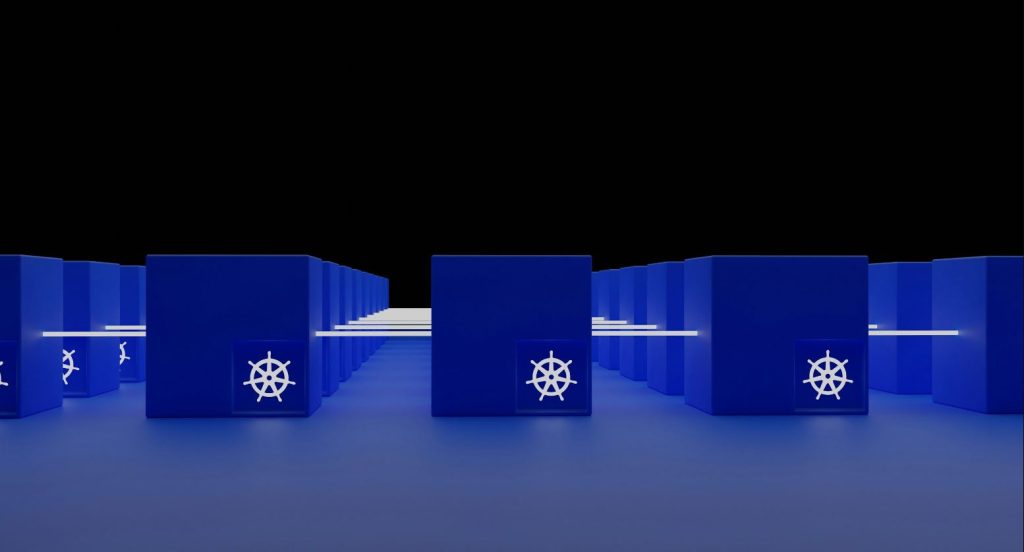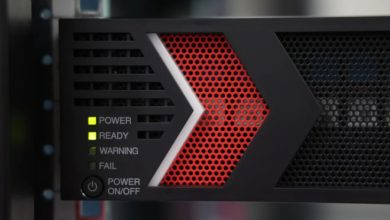Relevant as Ever! Virtual Machines, Containers, and Kubernetes Set for Happy Marriage in Age of Digital Transformation
Everyone Has a Place in the Modern Digital Era

Expressions like “it’s on its last legs” or “on the verge of extinction” are often used to describe technologies that are being superseded by newer developments. While this is sometimes true, it is not always the case. A good example of this are tape backups and mainframes, which are still in use long after their expected extinction.
Pretty soon, doomsayers might be saying the same thing about Virtual Machines (VMs), which for years have been helping businesses optimise hardware resources, scale their computing environment easily and seamlessly, and enable innovation.
It appears anything is possible with the rise of cloud computing, Containers, and Kubernetes.
The Rise of Containers and Kubernetes Are Shifting the Balance of Power
At least one expert Data & Storage Asia (DSA) talked to, Adam Brown, Managing Consultant at Synopsys Software Integrity Group, believes VMs are somewhat going down that path.

“Enterprises have already moved to cloud environments and reap the benefits of containers over virtual machines,” he told DSA. “Inevitably, virtual machines and their related management overheads and sometimes licencing costs are less relevant than containerisation and orchestration models like Kubernetes.”
Pure Storage’s “Voice of Kubernetes Experts Report 2024” seems to underscore this point, with 58 % of organisations planning to migrate some of their VM workloads to Kubernetes and 65% planning to migrate VM workloads within the next two years. In addition, Pure Storage found that 98% of respondents are already running data-intensive workloads on cloud-native platforms, with critical apps like databases (72%), analytics (67%), and Artificial Intelligence/Machine Learning (AI/ML) workloads (54%), in particular, being built on Kubernetes.
This rise of cloud-native platforms, according to Pure Storage, marks a fundamental shift in how businesses conceptualise, develop, and deploy applications at scale. In response, organisations are migrating their VMs to cloud-native platforms with an eye out for its many compelling benefits, including enhanced scalability, greater flexibility, operational simplicity, and reduced overall costs. This shift has also elevated Containers and Kubernetes from emerging technologies to cornerstones for modern applications that support even the most data-intensive workloads, like real-time analytics to AI and ML to databases, and more.
Finding a Happy Middle Ground Is in Order
So, is it really time to write obituaries for VMs?
Not quite.
In fact, VMs might be far from inevitable obsolescence. Actually, Pratyush Khare, Area Vice President, Systems Engineering, Asia Pacific & Japan, at Pure Storage thinks VMs will remain relevant—even as more and more companies are relying on Kubernetes and Containers.

“Based on our survey of the leading Kubernetes experts around the world, more companies are moving their VMs to Kubernetes, and they are doing so for operational benefits such as flexibility, scalability, simplicity, and efficiency. In addition to requiring less resources and less investment in hardware to scale, Kubernetes abstracts many of the complexities that come with VM management, providing higher-level management capabilities like automation,” he explained to DSA. “However, VMs will remain relevant as they are still in use by many organisations, thanks to their hardware-independence and ability to run traditional monolithic applications that require specific operating system stacks. Rather than becoming irrelevant or less prominent, it is likely that VMs will remain a complementary presence to Containers, with organisations continuing to use a mix of VMs and Containers—and in some cases, with Kubernetes running on VMs.”
In other words, instead of a slow, painful trot to irrelevance, it appears VMs are headed towards a happy middle ground with Kubernetes and Containers. In fact, VMs and Containers (and by extension, Kubernetes) are complementary, according to Anthony Spiteri, Regional CTO, APJ, and Lead Cloud Technologist at Veeam Software.
“While Kubernetes and containerisation have revolutionised how applications are deployed and managed, VMs are not going away anytime soon. Containers offer enhanced agility and scalability, particularly for microservices and cloud-native applications, but VMs still provide a level of isolation, security, and compatibility that many enterprises rely on, especially for established legacy applications,” he told DSA. “The reality is that VMs and Containers often complement each other. Hybrid environments, where both are used (cloud or on-premises), allow businesses to harness the benefits of each technology based on their specific use case.”

Complementary Pieces to the Digital Puzzle That Is Digitalisation
Indeed, lost in the sensationalist rhetoric of big tech is the fact that technologies are not always in competition with each other where the next innovation pushes the other out the window. That is has happened before—digital cameras rendered film photography irrelevant, only to be pushed out the window by smartphones—does not mean it holds true every time. This is proving to be the case for VMs and Containers as these two innovations are likely to settle in a happy coexistence.
“While Containers and Kubernetes will continue to grow in prominence and solidify themselves in the mainstream, VMs will remain a crucial part of the IT landscape, especially in enterprise and mission-critical environments. It’s more about coexistence than one replacing the other,” added Spiteri.

That is already happening, with many organisations running Kubernetes on top of VMs and getting the benefits of both—better isolation and security and more consistent performance for demanding applications from the latter and enhanced agility, flexibility, and scalability from the former.
Take, for instance, Company X, which may be using VMs to run its legacy payroll system, or a financial institution using VMs for highly demanding transactional workloads. In this case, the former gets to continue using its legacy system without disruption, while the latter benefits from the high reliability offered by VMs due to them having dedicated resource allocation. Critically, both are able to secure sensitive data because VMs isolate workloads at the OS level, reducing the attack surface. Both can also use Kubernetes on top of VMs to manage their modern web and mobile apps, allowing them to scale cloud-based workloads and provide agile, adaptive digital services.
Additionally, organisations can opt to run Kubernetes on VMs—a setup commonly used in cloud environments like AWS or Google Cloud, where Kubernetes orchestrates Containers running within VMs. This approach enables compatibility and maintains isolation and security (from the VM side) while providing the scalability and flexibility of containerised apps.
The Future Is Three-Fold—VMs, Kubernetes, and Containers
In short, VMs, Containers, and Kubernetes are looking at an interconnected future “marked by increased specialisation and coexistence,” according to Spiteri, who also expects containerisation to continue dominating cloud-native and microservices architectures to enable faster deployments, portability, and scalability. He also foresees Kubernetes, as the orchestration platform, to become more intelligent and automated, simplifying operations for complex, distributed systems.
That leaves VMs, which Spiteri says will “remain vital in scenarios requiring isolation, security, and compatibility with legacy applications, and continue to underpin critical infrastructure”—as in the case, for instance, of a large retail company running a high-performance database in a VM to track inventory across thousands of stores or a healthcare institution processing sensitive patient data. In both cases, using a VM makes more sense to ensure there is always enough resources for optimal performance and there is adequate isolation to keep sensitive information protected. Kubernetes, on the other hand, would potentially struggle in both aspects despite advancements in the technology.

According to Faiz Shakir, Vice President of Southern Asia at Nutanix, the interconnected future of VMs, Containers, and Kubernetes will continue in this age of digital transformation as businesses will need multiple options to run more modern applications in different environments, whether public cloud, private cloud, or hybrid. As a result, these same business must also manage traditional VM-based applications alongside containerised workloads in cloud-native environments to keep pace in this rapidly digitalising business landscape.
“As businesses increasingly deal with a mix of containerised and virtualised workloads, the infrastructure they use needs to be able to integrate both—and this is no small feat. Having a single integrated platform that integrates virtualisation with containerisation ensures that businesses do not run the risk of ending up with a silo just for containers,” Shakir explained to DSA. “This would also give them the flexibility and agility to move applications and data across hybrid multicloud environments, all while maintaining top-tier performance. Ultimately, the future lies in a flexible, heterogeneous IT landscape where Containers and VMs complement each other, driven by application needs and organisational goals.”
They Might Just Be Irreplaceable
Containers and Kubernetes have revolutionised how businesses manage modern applications, and they are rightfully dominating this cloud era. It does not mean, however, that they will push VMs out of the limelight entirely. In fact, the opposite is true, because despite the relative popularity of Containers and Kubernetes in this age of digital transformation, VMs remain crucial for different reasons, primarily running legacy infrastructure, securing sensitive data, and providing consistent performance for demanding applications.
So, expect VMs to remain fixtures in the evolving IT landscape—only this time, they will likely be used along with Containers and Kubernetes in hybrid approaches. After all, hybrid is the future, according to Spiteri, with Containers, Kubernetes, and VMs working together, each fulfilling specific roles for the needs of modern applications. And, as digital transformation accelerates, look for organisations to adopt technologies that will allow them to remain flexible, secure, and resilient in an increasingly dynamic landscape. Among these technologies will be Containers, Kubernetes, and yes, Virtual Machines.
So, no, these useful machines are not dying. They never were.




